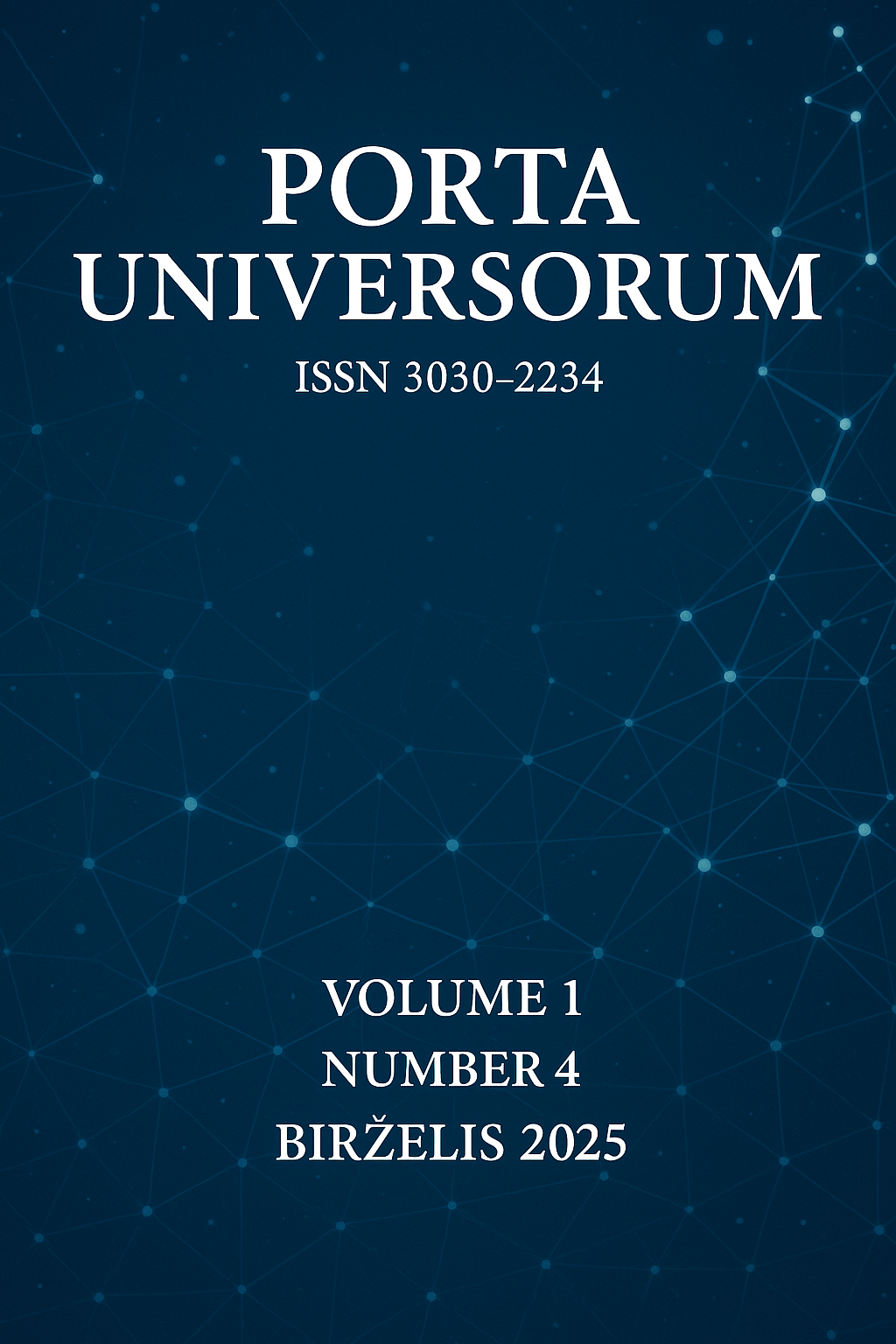A Taxonomic Approach to Structural and Semantic Dimensions in English Phraseology
DOI:
https://doi.org/10.69760/portuni.0104007Keywords:
phraseology, idiomatic expressions, structural linguistics, semantic typology, lexical combinations, English linguistics, phraseological classificationAbstract
Phraseological units are conventionalised multi-word expressions whose overall meaning cannot be straightforwardly derived from their individual parts. They include idioms, collocations, proverbs and other fixed expressions that are ubiquitous in English. Such units play a crucial role in language fluency, cultural expression and cognitive processing. This article aims to classify English phraseological units along two primary dimensions: structure (the syntactic form of the expression) and semantics (the transparency of meaning). We adopt a descriptive, corpus-based methodology, examining examples from the British National Corpus and authoritative idiom dictionaries (e.g. Oxford Dictionary of English Idioms) to ground our analysis. Structural categories are identified (e.g. noun phrases vs verb phrases vs full sentences) as well as semantic types (fully transparent vs semi-transparent vs opaque idioms). The proposed typology is summarized in terms analogous to nominative vs predicative vs communicative units. We also discuss how certain expressions blur category boundaries (e.g. literal vs figurative senses in context). This classification has practical implications: it can guide lexicographers in organizing idiom dictionaries, inform language teachers in grouping formulaic language, and assist computational linguists in multiword expression detection and processing. Future work may involve corpus-driven statistical modelling of phraseological regularities and the development of enriched phraseological databases for NLP applications.
References
Alisoy, H. (2023). Enhancing Understanding of English Phrasal Verbs in First-Year ELT Students Through Cognitive-Linguistic Methods.
Alisoy, H. (2023). Evolving vocabulary: Bridging colloquial and standard English in communication. Norwegian Journal of development of the International Science No, 120, 89.
Alisoy, H. (2024). The magic of languages: Introducing a second language in early childhood education. Retrieved from ResearchGate: https://doi. org/10.13140/RG, 2(11042.81603).
Alisoy, H., Mammadova, I., Asadova, B., Ismayilli, F., & Aliyeva, T. (2024). The future of language education: Integrating smartphones into the curriculum. Edelweiss Applied Science and Technology, 8(6), 4539-4556.
Babazade, Y. (2025). Speech Acts and Hidden Meaning: A Journey into Pragmatics. Acta Globalis Humanitatis Et Linguarum, 2(1), 221-228. https://doi.org/10.69760/aghel.02500128
Cowie, A. P. (Ed.). (2001). Phraseology: Theory, analysis and applications. Oxford: Oxford University Press. https://doi.org/10.1093/oso/9780198294252.001.0001
Cowie, A. P., Mackin, R., & McCaig, I. R. (1993/1994). Oxford Dictionary of English Idioms (rev. ed.). Oxford: Oxford University Press.
Dobrovol’skij, D., & Piirainen, E. (Eds.). (2006). Phraseology: An international handbook of contemporary research (Vols. 1–2). Berlin: Mouton de Gruyter.
Fernando, C. (1996). Idioms and idiomaticity. Oxford: Oxford University Press.
Gläser, R. (1998). The stylistic potential of phraseological units in the light of genre analysis. In A. P. Cowie (Ed.), Phraseology: Theory, analysis and applications (pp. 125–143). Oxford: Oxford University Press.
Hajiyeva, B. (2024). Challenges in Understanding Idiomatic Expressions. Acta Globalis Humanitatis Et Linguarum, 1(2), 67-73. https://doi.org/10.69760/aghel.01024066
Hajiyeva, B. (2025). Translating Idioms and Slang: Problems, Strategies, and Cultural Implications. Acta Globalis Humanitatis Et Linguarum, 2(2), 284-293. https://doi.org/10.69760/aghel.025002123
Khudaverdiyeva, T. (2024). Enhancing Language Learning in Young Learners Through Azerbaijani Fairy Tales. EuroGlobal Journal of Linguistics and Language Education, 1(1), 141-150. https://doi.org/10.69760/g6vv0g32
Moon, R. E. (1998). Fixed expressions and idioms in English: A corpus-based approach. Oxford: Clarendon Press.
Sadigzadeh, Z. Interplay of Linguistic Relativism and Universalism. Akademik Tarih ve Düşünce Dergisi, 11(3), 1750-1758.
Sadiqzade, Z. (2025). The Linguistic Expression of Emotion: A Cross-Cultural Analysis. EuroGlobal Journal of Linguistics and Language Education, 2(3), 42-54.
Sadiqzade, Z., & Alisoy, H. (2024). Level-Up Learning: Using Games to Teach English Across Student Levels. EuroGlobal Journal of Linguistics and Language Education, 1(3), 181-194. https://doi.org/10.69760/egjlle.20240104
Sinclair, J. (2004). Trust the Text: Language, corpus and discourse. London: Routledge.
Vinogradov, V. V. (1950). Theoretical foundations of phraseology. Moscow: Academy of Sciences.
Wray, A. (2002). Formulaic language and the lexicon. Cambridge: Cambridge University Press.
Wray, A., & Perkins, M. R. (2000). The functions of formulaic language: An integrated model. Language and Communication, 20(1), 1–28.
Downloads
Published
Issue
Section
License
Copyright (c) 2025 Porta Universorum

This work is licensed under a Creative Commons Attribution-NonCommercial 4.0 International License.
License Terms
All articles published in Porta Universorum are licensed under the Creative Commons Attribution–NonCommercial 4.0 International License (CC BY-NC 4.0). This license permits:
-
Sharing (copying and redistributing the material in any medium or format),
-
Adapting (remixing, transforming, and building upon the material),
-
for non-commercial purposes only,
-
with proper attribution to the original author(s) and source.
Commercial use of the material is not permitted without prior written permission from the publisher.




